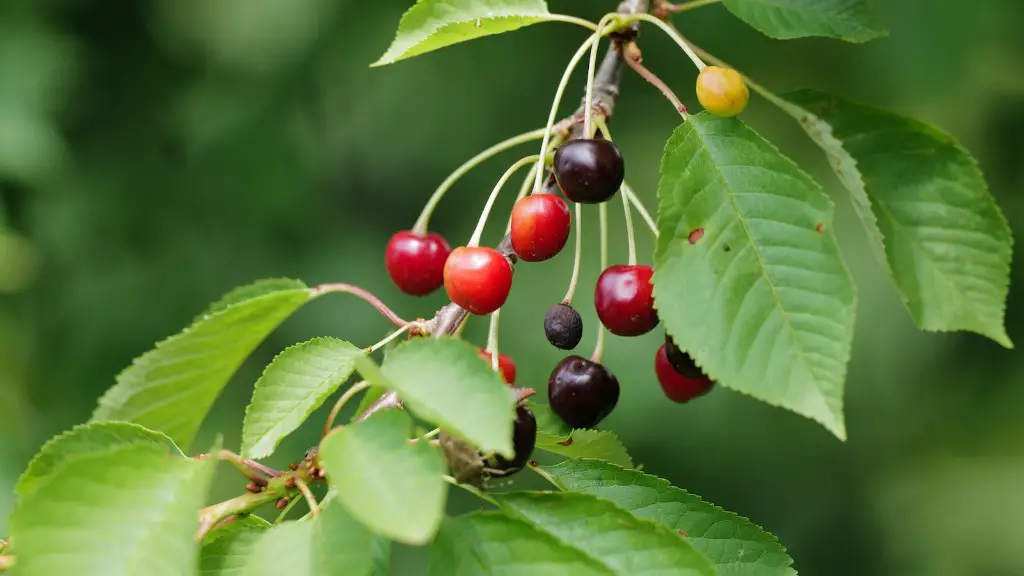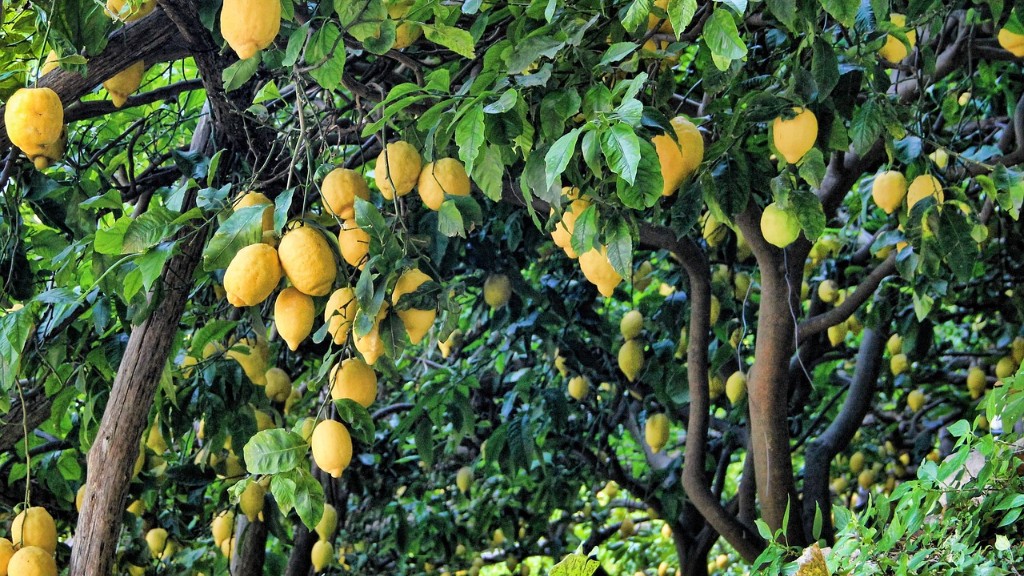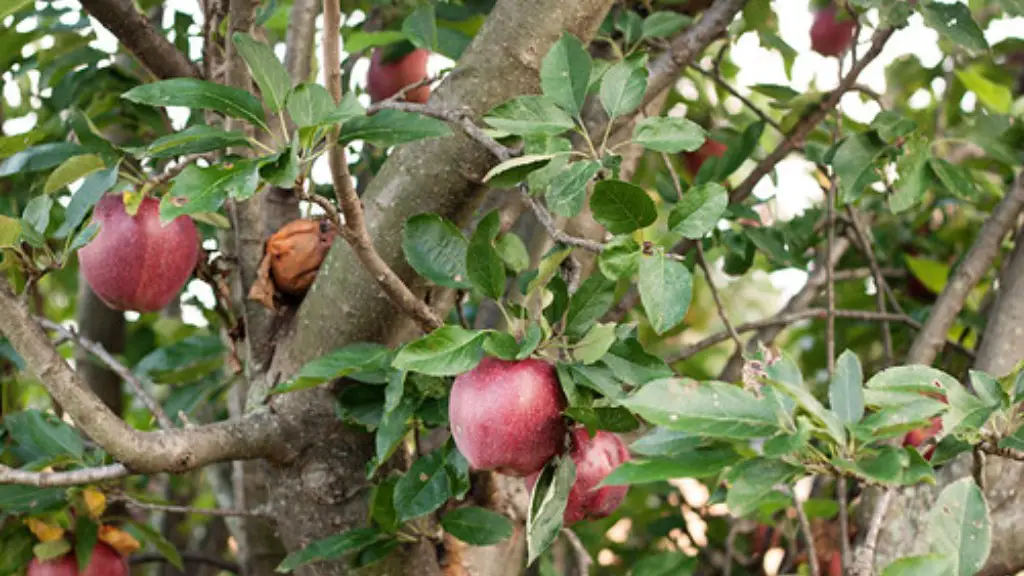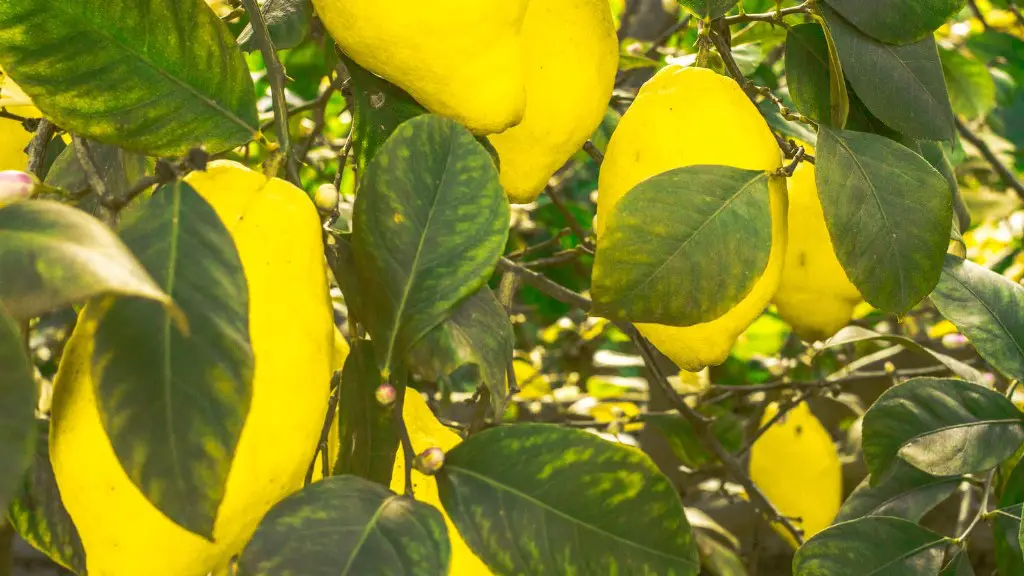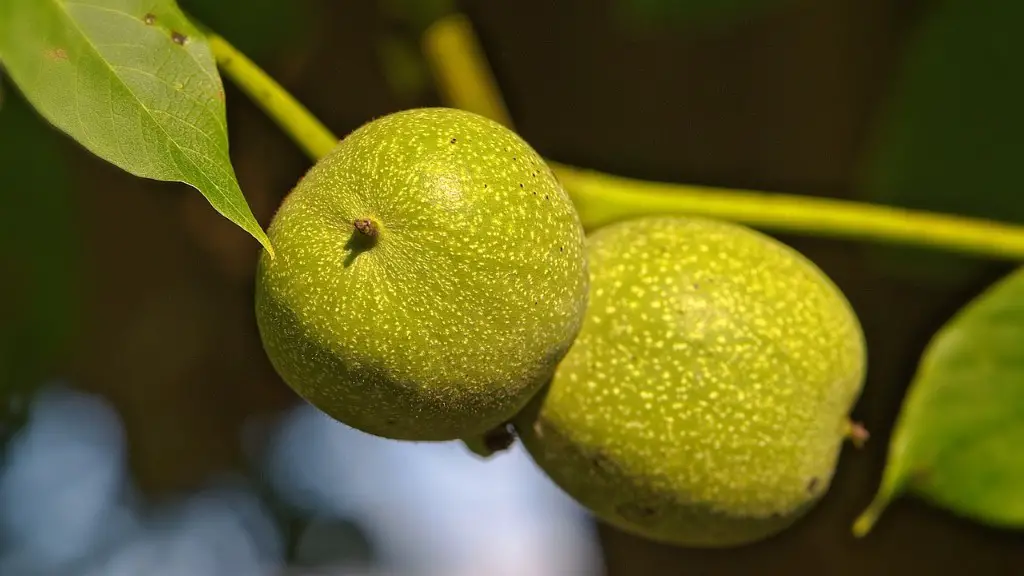Growing a cherry tree from a pit isn’t a quick and easy task, but something that requires patience, dedication, and attention to detail. Taking care of a young tree will require careful watering, pruning, and fertilizer to foster a healthy young tree that can be a part of landscapes for years to come. Here’s how to get started.
The first step in growing a cherry tree from a pit is to select the right cherry. Look for a cherry pit that is larger and easy to split open. Once the pit is open, look for a single seed inside. The seed should look mature and white or light tan. The ability of the cherry tree to grown to maturity relies heavily on the quality of the pit used, so it’s important to make sure the pit looks healthy, not dried out or worn down. Put the selected pit in wet soil and cover it with a thin layer of dirt.
Now it’s time to wait. Over time, the pit will eventually start to sprout leaves, although it might take several weeks or months, depending on the chosen pit’s age. Meanwhile, water the pit regularly but only lightly – several times a week should do the trick – and wait for the roots to form. At this stage, it is important to be extra careful; young cherry trees can easily be broken or damaged.
Once the root system is established, it may be time to start feeding the plant. Applying fertilizer every couple of weeks, in the early stages, is important for the growing tree. When selecting a fertilizer, look for a slow-release mixture that suits the type of cherry tree you have in your garden. From this point on, the tree should be treated like any other healthy tree; plenty of sunlight and water, good drainage, and regular pruning.
Transplanting a cherry tree from a pit to an outdoor location isn’t a small endeavor, and there are many steps involved in growing a tree from this method, as compared to simply buying a young tree from a nursery. But with patience and attention to detail, success rates can be high and you can look forward to an abundance of cherries for years to come.
What’s the Optimal Soil for a Pit-Grown Cherry Tree?
The soil that a cherry tree is planted in can make a huge difference in the success and growth of the tree. Soil should be well-drained but not too dry, rich in organic matter, and slightly acidic with a pH of 6.5 to 7.5; cherry trees prefer soil that falls within this range. When planting a cherry tree, it’s important to add plenty of composted organic matter to the soil before planting. This will help the tree to get the nutrients it needs, and to retain moisture during dry periods.
If you are in doubt about the soil in your yard, it can be tested for pH levels and key nutrients before planting. This can provide important information about what changes need to be made to the soil before planting a cherry tree. Adjusting the soil based on the results of the test can go a long way in helping to make sure the tree has a healthy start.
How Can I Protect a Young Cherry Tree?
Protecting a young cherry tree is important in encouraging its growth and ensuring that it will produce a healthy harvest of cherries when it’s older. Young cherry trees are particularly vulnerable to different pests and diseases, so it’s important to take steps to protect them when they are young. These include applying an appropriate pesticide or fungicide, according to the specific needs of the tree, and paying attention to watering and pruning.
Different kinds of insects can be a threat to cherry trees, including aphids, caterpillars, and various beetles. Some of these can be dealt with by regularly pruning the tree; removing the dead or damaged branches can help to reduce the risk of infestation. A thorough examination of the tree should be done every now and then to make sure there are no pests present.
Fungal diseases are also a common threat for cherry trees. Powdery mildew and leaf blight can affect cherry trees, and so can Verticillium wilt, which is a fungus that attacks the roots and stem of cherry trees. The best way to protect your cherry tree from these types of fungal diseases is to keep the tree healthy and to watch for signs of the disease. Early diagnosis and treatment of these diseases can help to reduce the risk of more serious damage to the tree.
When Can I Expect My Cherry Tree to Produce Fruits?
The amount of time it takes for a cherry tree to produce fruit can vary, depending on the type of cherry tree and other factors such as the climate and soil conditions. On average, you can expect your cherry tree to produce its first fruit in three to five years after planting. With good care and attention, the tree should reach peak production within 10 years.
One of the most important factors in achieving a good harvest is to make sure the cherry tree is properly pruned. Pruning helps to maintain the shape of the tree, encouraging a healthy growth and promoting more efficient fruit production. It’s best to prune cherry trees in the winter, when the tree is in its dormant stage, as this helps to prevent diseases and also encourages new growth.
Pollinating your cherry tree is also important for a good fruit harvest. Cherry trees need cross-pollination, which means you will need two or more cherry trees in your yard that belong to the same species, in order for them to produce fruit. Once the cherry tree blooms and starts to develop fruit, be sure to check the tree regularly, as birds and other wildlife may try to steal the cherries before they are ready to be harvested.
Are There Other Important Considerations When Growing a Cherry Tree?
When growing a cherry tree from a pit, it’s important to keep in mind the different pests and diseases that can affect the tree. In general, cherry trees are quite resilient, but they can suffer from various fungal diseases and insect infestations, and it is important to be aware of these risks and take steps to protect the tree accordingly.
It is also a good idea to monitor the growth of the cherry tree as it matures. Some regular pruning and fertilization will be needed to keep the tree healthy, and it is important to be aware of the potential problems that can arise. If you notice any signs of unhealthy growth, such as sudden wilting of leaves, discolored or dead branches, or other unconventional growth patterns, it is a good idea to speak to a professional for advice.
Overall, growing a cherry tree from a pit is an exciting and rewarding experience. With a little bit of luck and some careful attention, you can enjoy a bounty of fresh cherries right from your own backyard for years to come.
How Often Should I Water My Cherry Tree?
Watering is an important part of cherry tree care, as this will help to maintain the health of the tree and ensure that it produces a good harvest. As a general rule, it’s best to water a cherry tree deeply but infrequently, supplying about an inch of water every week during the growing season. The tree should be watered in the morning, when the temperatures are lower, to minimize the amount of water that evaporates before it can be absorbed by the tree.
It’s important to check the soil around the cherry tree regularly, to make sure it is not getting too dry. If the soil is dry, even after a good soaking, then it’s time to increase the watering schedule. Also, pay attention to weather patterns; regular rainfall may be enough to supplement the watering schedule in some cases, while very hot weather may necessitate more frequent watering.
For newly-planted cherry trees, it is important to provide extra water for the tree for the first couple of months to help the tree establish itself in its new surroundings. Keeping the soil around the tree moist is essential for the first few weeks, and it is best to water the tree at least twice a week during this period.
What is the Best Way to Fertilize a Cherry Tree?
Fertilizing is essential for cherry trees; it provides them with the nutrients they need to grow and produce a healthy harvest of fruit. It’s best to fertilize cherry trees every spring, once the danger of frost has passed, and then continue with regular fertilization every six weeks during the growing season. This will help the tree to stay healthy and ensure that it produces a good harvest.
When selecting fertilizer for a cherry tree, it’s important to choose one that is specifically formulated for cherry trees. In general, these kinds of fertilizers should contain a balance of nitrogen, phosphorus, and other essential nutrients, such as magnesium and zinc. They should also have a higher concentration of phosphorus, as this helps to promote healthy root growth and fruit production.
It’s important to spread the fertilizer around the tree, concentrating on the area near the roots, as this is where the tree will absorb the majority of the nutrients. Additionally, it’s a good idea to apply some fertilizer to the leaves of the tree, as this can help to ward off some of the pests that can affect cherry trees.
How Can I Tell if my Cherry Tree is Ready to Harvest?
When the time comes to harvest your cherry tree, the best way to tell if the fruit is ready to be picked is to taste one. When the cherry is ripe and ready to be harvested, it should be plump, juicy, and sweet. The fruit may also be slightly soft to the touch.
Additionally, it’s a good idea to check the color of the fruit. For some varieties of cherry, the fruit will begin to darken when it is ready to be harvested, either turning a deep red or blue. For other types ofcherry, the fruit may stay a light color but will start to soften when it is ready to be picked.
Of course, weather can also play a role in a cherry tree’s harvest. In some cases, heavy rain or strong winds can cause some of the fruit to ripen early, so it’s a good idea to check the tree frequently during stormy weather.
Harvesting your cherry tree can be an exciting and rewarding experience. With a little bit of luck and some careful attention, you can enjoy a harvest of fresh, juicy cherries right from your own backyard.
